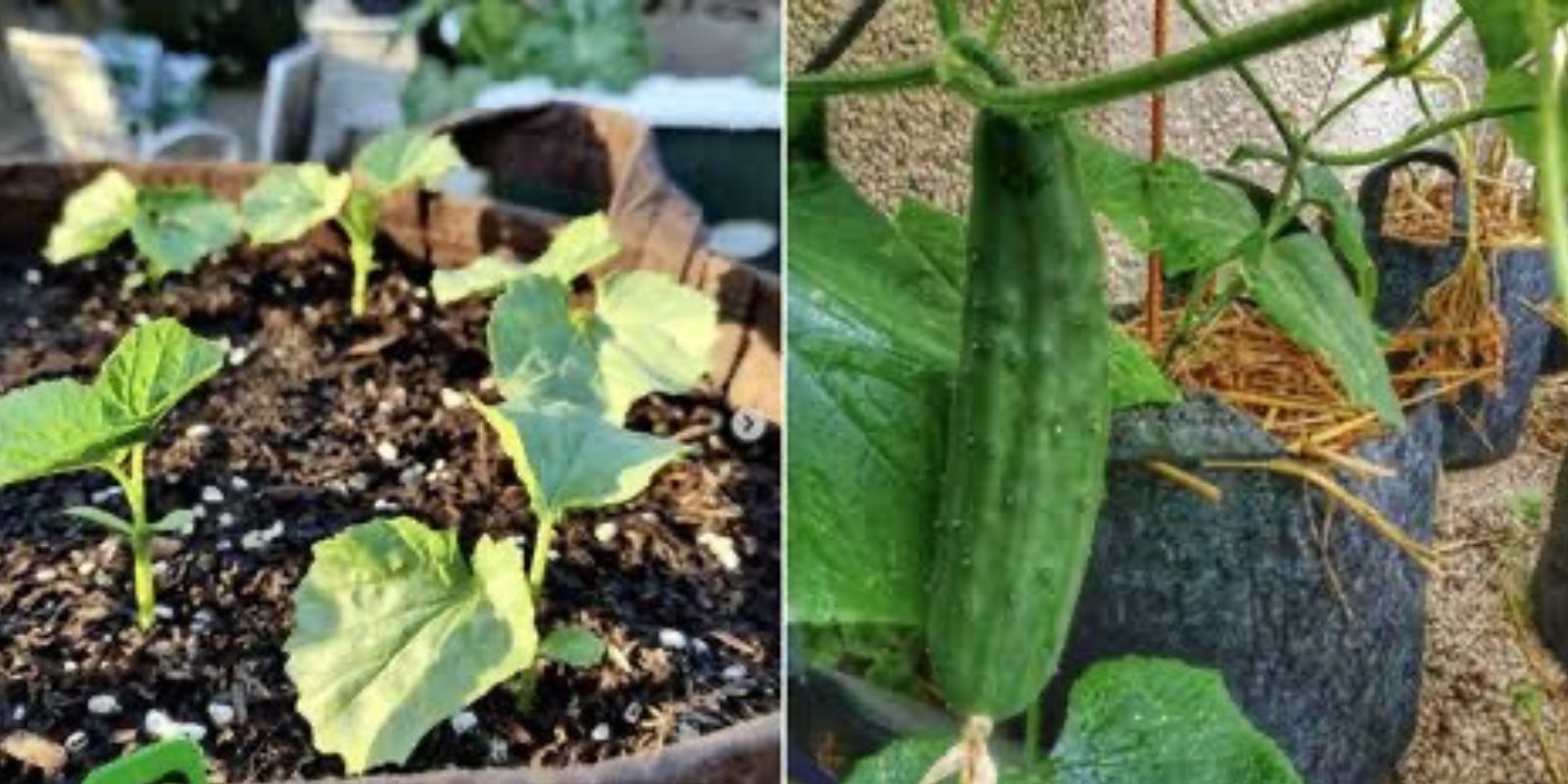Cucumbers are a refreshing and nutritious addition to any home garden, but what if you don’t have space for a traditional vegetable bed? The good news is that you can grow cucumbers successfully in containers, even on a small balcony or patio. With the right setup and care, you’ll enjoy a bountiful harvest of crispy, delicious cucumbers right at home.
In this guide, we’ll explore the simple secrets to growing cucumbers in containers, from selecting the right pot to proper watering, fertilizing, and pest management. Whether you’re a beginner or an experienced gardener, these tips will ensure that your cucumbers thrive.
Why Grow Cucumbers in Containers?
Container gardening is an excellent way to grow cucumbers for many reasons:
- Space-saving: You can grow cucumbers even if you have limited space, such as a balcony, patio, or small backyard.
- Better pest control: Containers allow you to move your plants to protect them from pests and diseases.
- Easier maintenance: With container gardening, watering, weeding, and fertilizing are simpler and more manageable.
- Extended growing season: Containers can be moved indoors or to a warmer location in case of unexpected cold weather.
Now, let’s dive into the step-by-step process of growing cucumbers in containers successfully.
1. Choose the Right Container
The container you select is one of the most crucial factors in growing healthy cucumbers. Here’s what you need:
- Size: Cucumbers have deep roots, so a container should be at least 12-16 inches deep and wide.
- Drainage: Ensure your pot has adequate drainage holes to prevent root rot.
- Material: Plastic, ceramic, or fabric grow bags all work well. Avoid metal containers as they can overheat.
If possible, opt for self-watering containers, which help maintain consistent moisture levels.
2. Pick the Best Soil
Cucumbers thrive in well-draining, nutrient-rich soil. Avoid using garden soil, which may compact in containers and hinder root growth. Instead, choose a high-quality potting mix with added compost or aged manure for extra nutrients.
For improved drainage, mix in perlite or coconut coir to keep the soil light and airy.
3. Select the Right Cucumber Variety
Not all cucumbers are suitable for container gardening. It’s best to choose bush or compact varieties that don’t require a lot of space to spread. Some great options include:
- Bush Champion – Compact and perfect for small spaces.
- Patio Snacker – Ideal for container gardening with good yield.
- Spacemaster 80 – Small but produces plenty of cucumbers.
- Salad Bush – Grows well in pots and offers high productivity.
If you prefer vining cucumbers, be sure to provide them with proper support (we’ll discuss this next).
4. Provide Support
Even when growing cucumbers in containers, they need support to prevent sprawling and promote better air circulation. Trellises and stakes help keep the plants upright and make harvesting easier.
- Use a trellis: A simple bamboo stake, cage, or vertical trellis will help vine cucumbers grow upwards.
- Save space: Training cucumbers vertically reduces the risk of disease and allows more plants to grow in a small area.
Bush varieties may not require as much support, but they still benefit from some structure to keep fruits off the soil.
5. Watering: Keep Soil Moist but Not Soggy
Cucumbers need consistent moisture, but overwatering can lead to root rot. Here are some watering tips:
- Water deeply: Ensure water reaches the roots, typically once a day in hot weather.
- Morning watering: Watering in the morning allows excess moisture to evaporate during the day.
- Check soil moisture: Stick your finger into the soil—if the top inch feels dry, it’s time to water.
- Use mulch: Adding a layer of straw, wood chips, or dry leaves helps retain moisture and reduces watering frequency.
6. Fertilizing: Give Your Cucumbers the Right Nutrients
Cucumbers are heavy feeders, so fertilizing is essential for strong growth and fruit production.
- Use an organic fertilizer: A balanced fertilizer (10-10-10 or 5-10-10 NPK ratio) works well.
- Apply every 2-3 weeks: Use liquid or granular fertilizer throughout the growing season.
- Compost tea or fish emulsion: These organic options boost plant health naturally.
A lack of nutrients can cause small cucumbers, yellow leaves, or slow growth, so keep an eye on your plants’ health.
7. Ensure Proper Sunlight
Cucumbers love the sun! To thrive, they need:
- At least 6-8 hours of direct sunlight daily.
- A warm location, preferably near a south-facing wall or balcony.
- Protection from extreme heat, which can be provided with a light shade cloth on very hot days.
If you’re growing indoors, consider using grow lights to supplement sunlight.
8. Watch for Pests and Diseases
Even in containers, cucumbers can attract pests like:
- Aphids – Remove with a strong spray of water or neem oil.
- Cucumber beetles – Use floating row covers or handpick them off.
- Powdery mildew – Prevent by ensuring good air circulation and avoiding overhead watering.
Regularly inspect your plants for signs of pests and diseases, and act quickly if you notice any issues.
Harvesting Your Cucumbers
Once your cucumber plants start producing, you’ll want to harvest frequently to encourage continued growth.
- Pick cucumbers when they reach the desired size, usually 6-8 inches long for slicing varieties.
- Use sharp scissors or pruners to avoid damaging the plant.
- Frequent harvesting prevents the plant from putting energy into overripe cucumbers, leading to a longer harvest season.
Final Thoughts: Enjoy Your Homegrown Cucumbers!
By following these simple secrets, you can enjoy fresh, homegrown cucumbers even without a large garden. Container gardening is a fantastic way to grow food in small spaces, and with the right care, your cucumber plants will thrive.
🌱 Have you tried growing cucumbers in containers? Share your experiences and tips in the comments! 👇

